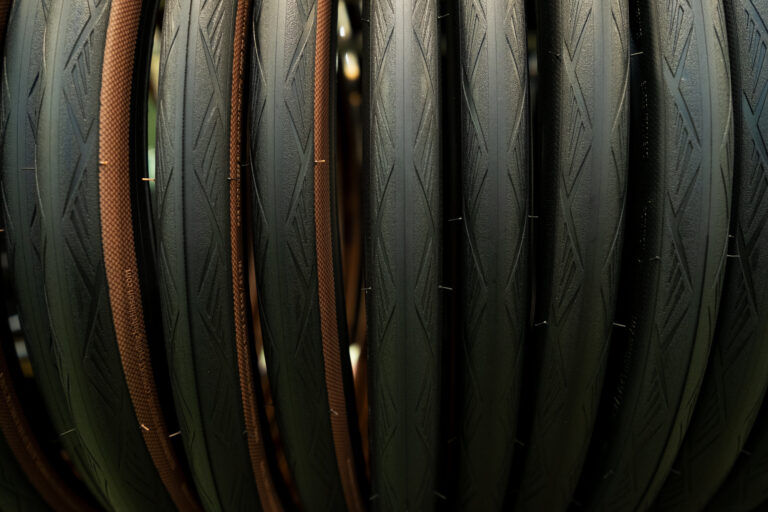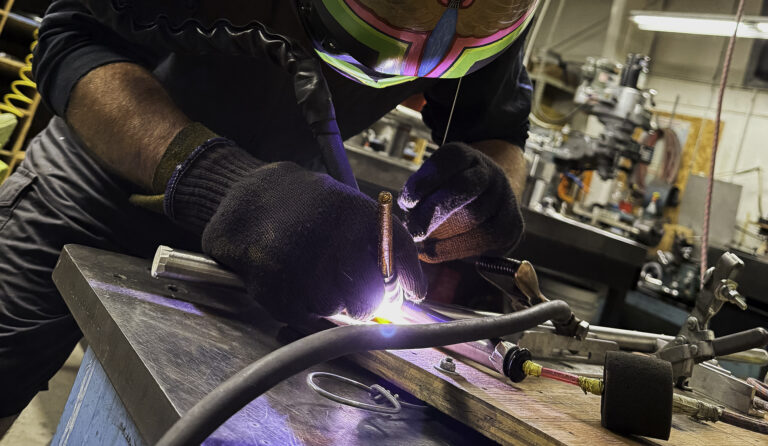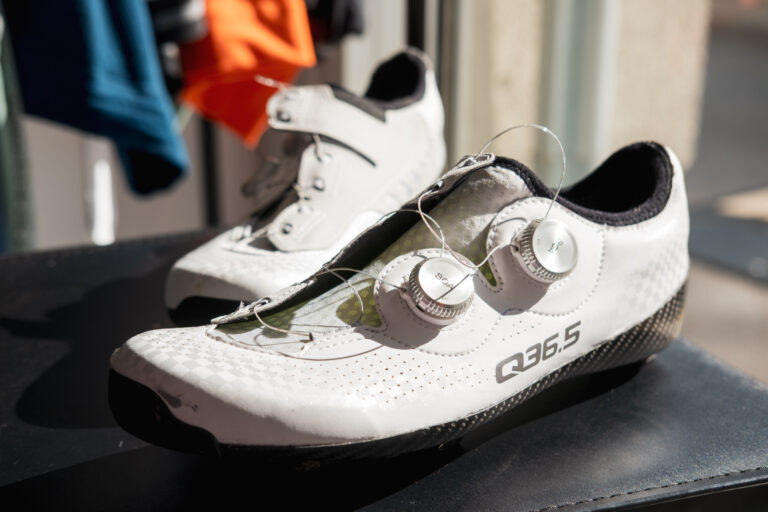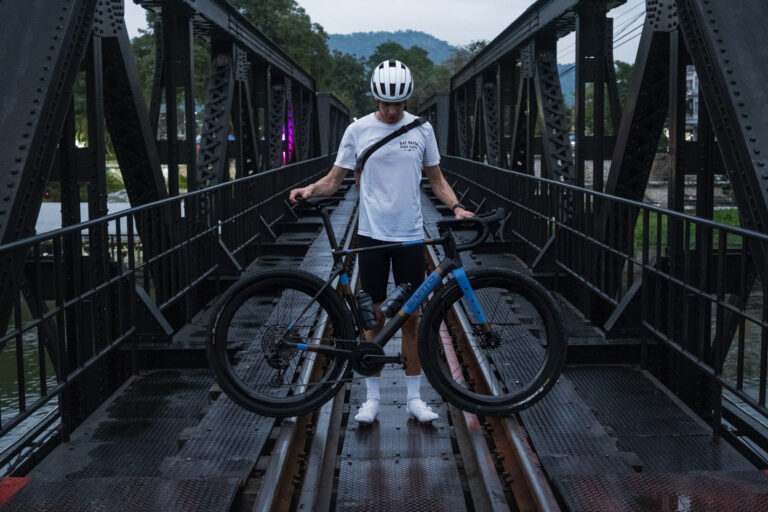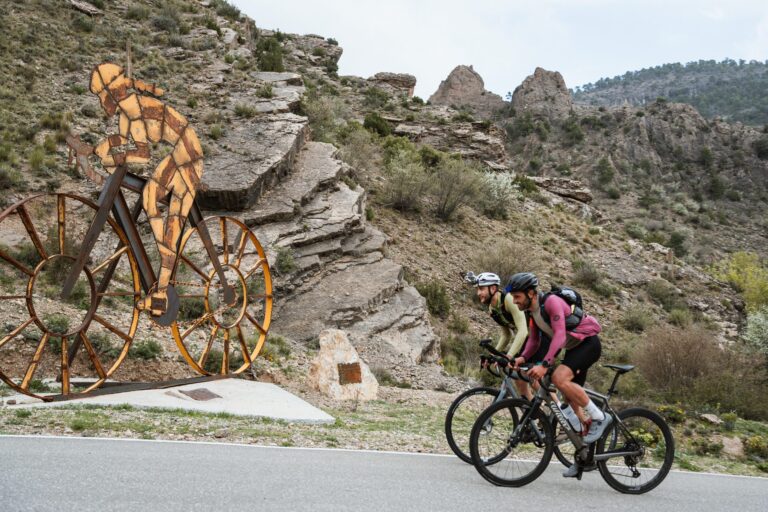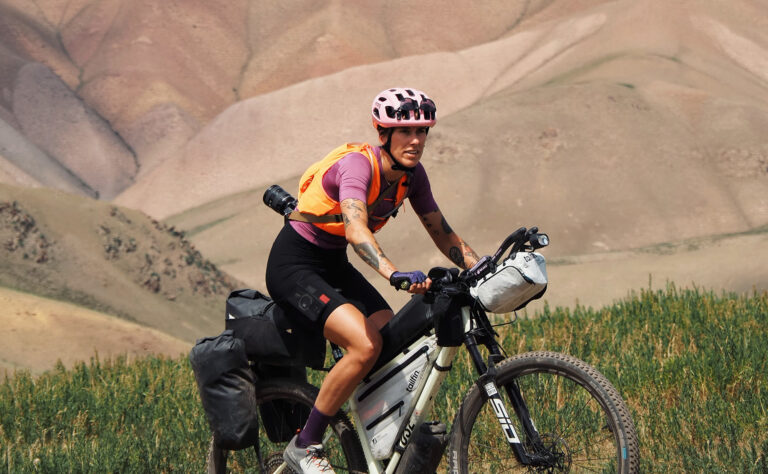Blog
Migration Gravel Race 2024: When finishing is a remarkable feat
We were warned by previous participants of the toughness of the terrain. Partly because of it, we arrived in Kenya a week beforehand to acclimatize to the altitude and test our gear. Even then, what we had to overcome during the Migration Gravel Race exceeded any prior expectations and required us to empty the tank to make it to the finish after four brutal stages.
The Migration Gravel Race, which is currently one of the five Global events of the Gravel Earth Series, took place for the first time in 2021, and after three editions following the event from a distance, this year we were at the startline together with another 230 riders. A mix of local talent, gravel enthusiasts, and people willing to embark on an adventure that goes beyond the racing component.
Most of us already got a glimpse of what is like riding in East Africa by participating in the Safari Gravel Race the previous weekend, part of the UCI Gravel World Series. However, while the one-day race took place in Hell’s Gate National Park in Naivasha, where we found a lot of sandy paths, the Migration Gravel Race was contained within the Masai Mara natural reserve, bordering Tanzania. Two places separated by an overland bus drive but so different at the same time.
The aforementioned shuttle gave us an idea of the condition of the terrain in the area. It was so rough and bumpy that the truck containing all the bikes and big suitcases got stuck not once, but twice. We finally made it to the initial camp sitting next to the river Mara. For the next four days, June 18th – 21st, we would put our bike to the biggest test to date.
One of the novelties of this year was the introduction of a “Zebra” version of the race. The registered participants who chose to follow the Zebra itinerary would tackle shorter distances, allowing them to spend more time at the camp and broadening the profile of cyclists present in the race. The rest would follow the full or also called “Leopard” version.
Once everyone passed by the registration desk and assembled their bike, the race briefing started. Everything, from the description of the stages to the logistic matters, was clearly explained, and as the organizers started wrapping up their speech, a heavy rain began. We didn’t know the impact it would have, but it was clear that the terrain would not dry on time.
Stage 1 | Unexpected mudfest
Alarm at 5.15 AM. Queue for breakfast. Fill bidons and hydration pack. Get changed. Warm-up (this part only lasted for a day, as for the following stages we squeezed our time in the tent). 7.30 AM start. And then we push our bikes for an average of 7 hours a day. A healthy routine, eh? We ended up used to it, but at least in the initial stage, we were still trying to figure out where we were. The thick mud we found at around km 20 would put us even more out of our comfort zone.
The first patches of mud were ok and could be avoided by choosing a different line. Not long after, there was no possible choice. We had to ride, or walk, through something that was more like clay, with our wheels unable to keep turning. Removing the mud wasn’t effective at all, as what lay ahead was more of the same. “I have never been in this situation, what should I do?”, we thought. Others were more explicit, though. “Porca troia!” shouted next to us Federico Damiani from Enough CC.
We looked at the others to see what they were doing, and apparently, the best choice was to hike a bike, dipping our legs in the mud and trying to make it to the other side, where we would stop for a good handful of minutes for damage assessment.
It was like a videogame, where every level had its challenges. After the mud, it was time for block headwinds, which lasted for more than two hours. Those are the risks of the routes heading in a single direction… Things didn’t change much for the remainder of the stage, and our general thought while ticking off the kilometers, mainly riding on our own, was something like “If I’m already so exhausted before finishing stage 1, how will I make it through the rest of the days?”
Somehow we made it to the camp, where there was already a big pile of dirty bikes demanding to be cleaned. Mechanics, masseurs and all the local Maasai community involved in looking after us at the camp would spend the rest of the day, and a big share of the night, making sure that we recover as much as possible from the effort exerted. Many books could be written about what we experienced on that day, but remember that it was still stage one out of four.
Stage 2 | Racing at +2.600 m of elevation
The initial four kilometers of stage two were neutralised because of the narrow path in descending direction, but as soon as we hit a much wider gravel section, the official start was given.
The following section was characterized by the dust that prevented us from seeing what there was three meters ahead, making us wonder if it was riskier to ride in a group simply relying on the line chosen by the rider in front, or to be on our own so we could have a bit more time to react.
We avoided the different crashes that happened in front of us and started tackling the main climb of the day, with a length of 18 kilometers and a summit at 2.630 meters of elevation. The first half was on smooth gravel and the gradients were mellow, but as soon as we turned right after water stop 1 it got steeper and through narrower paths.
Not long after hitting the top of the climb, we started a 50 km long section of singletracks and double tracks, including several technical segments and water crossings. It was a relentless up and down with barely any moment to recover, and we honestly think it was a bit too much for bikes without suspension.
It wasn’t until water stop 2, located at kilometer 114, that we finally found proper gravel paths, but the hurdles did not stop there as this time what prevented us from keeping a constant pace were the many cows and sheep on our way. Not the wildlife that we desired to come across.
With sore back and tired legs, we arrived at the camp where we would spend the following two nights. Many people arrived before us, some because they were simply faster than us and others because they took the escape route that was facilitated by the organizers, aware of the toughness of the stage. We were told that 50% of the Leopard riders followed this escape route.
After 9 hours of riding, and taking into account that sunset in Kenya is around 7 PM all year round, it got dark by the time we had our recovery meal and headed to the primitive showers. At least we were a bit relieved when Mikel, who in addition to leading the Amani project was also involved in the organisation of the race, acknowledged during the podium ceremony that this edition was the toughest to date.
Stage 3 | The gravel we like
We could hear the rain hit our tents during the night before stage 3, and it was only the morning after that we remembered that we left our kit and shoes outside to dry. Not the desired start of the day.
That camp was located at 2.300 meters of elevation, something we should have taken into account when deciding which pieces of clothing to bring to East Africa. It was quite cold, with thick fog that only went away a few minutes before the start.
We waited until the very last minute to leave our cosy tent and line up at the start. Given our position in GC, rushing to be at the front did not make any sense, and also many people would not start that day feeling the consequences of the previous two days of racing, so there was space for everyone. Still, we managed to forget our gloves, something you don’t want when there is another bumpy day ahead.
Stage 3 was mainly gravel, the real gravel. That allowed for higher speeds and therefore more smiles during the day, something we all welcomed with open arms. We will forever remember the segment in the earlier part of the day in which, while riding in an exposed area on some sort of plateau, we saw dozens of wildebeest in the never-ending migration from the Masai Mara to the Serengeti and back. In case you did not infer yet, that is where the name of the event comes from.
Unlike the other stages, which went from point A to point B, the route for that day was a loop. Aware of it, we went for a conservative approach during the first half of the stage, where we enjoyed some nice tailwind, because we knew that it would later turn into a headwind as we headed back to the camp.
Along the route, there were thousands of kinds shouting “Jambo!”, making our day on the saddle even more pleasant. It was nonetheless still a long effort, and after overcoming several consecutive short climbs in the latter part of the stage, we finished just above the 7 hours of riding time.
Stage 4 | Not a final parade
The last stage was supposed to be a difficult task for the Zebras (referring to the participants who chose the Zebra version of the event) and those facing the consequences of the accumulated fatigue. There was no possible shortcut. All of us had to do the 140 km that separated us from the last camp. The good thing is that the weather gods were on our side, and the forecast was no clouds, mild temperatures, and a tailwind all the way.
We haven’t talked much about the situation at the top of the General Classification, and the truth is that the situation with one day to go was exciting. Sarah Sturm was the favorite to keep her 1st place, and both Louise Valentin and Maddy Nutt had their position on the podium locked in.
As for the men, the gap between Mattia de Marchi and Hans Becking was 8 minutes. The Dutch mountainbiker had already reduced his time deficit on the previous stage, so he was eager to upset the rider from Enough CC and return home with the overall win in the bag.
In order to do so he found a nice ally in Lukas Baumm, winner of the last edition of the race, who struggled on stage 1 but got the win in the following two stages. They set a furious pace from the gun and managed to distance the leader, who would end up losing the jersey despite pushing hard in the chasing group together with Chad Haga.
A couple of hours later we crossed the line. An easy day on paper turned out to be a nightmare given all the misfortunes we had to overcome. Stomach issues and several flats put our finisher status in jeopardy, but our desire to get the finisher’s belt award offset the frustration we experienced.
An emotional closing
There we were, at the final prize ceremony being honored as one of the 45 participants that did all the stages in their full length. Who would have thought that we would consider “simply” finishing as a remarkable achievement, a victory in relative terms, but the truth is that this edition of the Migration Gravel Race was one of the biggest challenges all registered riders have ever faced.
Throughout this piece, we have mainly focused on the riding part, but we want to stress that the event goes beyond what’s competition-related. We got to know like-minded individuals and shared all kinds of moments with them. We can also consider ourselves lucky because we saw some of the most beautiful animals on the globe while practicing the sport we love. We discovered the East African culture, with some similarities but many, many differences when compared to what we are used to. This event pushed us out of our comfort zone, and we liked that feeling.
















